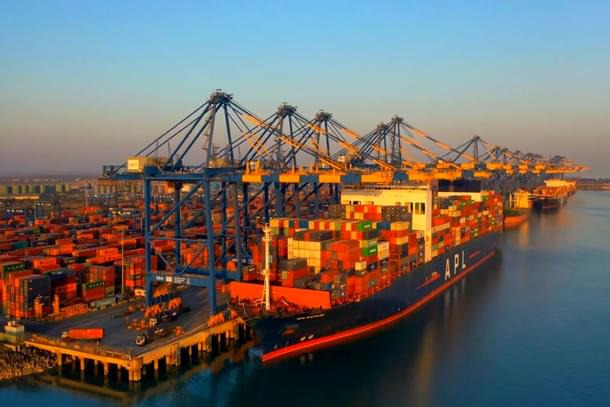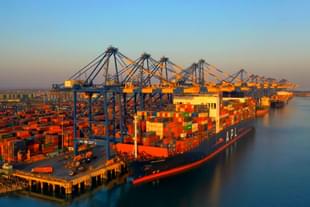Infrastructure
India Embarks On Comprehensive Port Review To Boost Capacity And Green Transition
V Bhagya Subhashini
Sep 11, 2024, 03:58 PM | Updated Sep 13, 2024, 05:56 PM IST
Save & read from anywhere!
Bookmark stories for easy access on any device or the Swarajya app.


India is undertaking an extensive review of its major ports to identify and address operational inefficiencies and infrastructure deficiencies. The initiative aims to enhance port capacities, improve handling capabilities, and support the transition to greener technologies.
This evaluation will be integral to advancing the Maritime India Vision (MIV) 2030 and the Maritime Amrit Kaal Vision 2047.
The MIV 2030 is a comprehensive plan to transform India's maritime sector, emphasising self-reliance.
The review will assess all large ports across multiple parameters, focusing on areas such as infrastructure, efficiency, and technology adoption. By pinpointing existing shortcomings and the need for improvement, the government seeks to scale up port capacities and prepare them for handling larger vessels.
The overarching goal is to transform key ports into regional maritime hubs capable of meeting modern demands.
A significant aspect of the evaluation is the development of benchmark standards and best practices for ports nationwide. The government plans to rank ports based on their performance, which will help set common minimum standards and drive improvements across the board. This ranking system will run concurrently with the evaluation process, offering a comprehensive overview of port capabilities and areas needing attention.
The review is part of a broader effort to optimise port operations by reducing cargo handling and ship turnaround times. This will help maximise the capacity of existing ports and make them more competitive on a global scale.
New technologies and sectors, including advancements since the Vision 2030 goals were set, will be incorporated into the review process. This includes exploring green infrastructure initiatives such as Green Hydrogen storage and utilisation and scaling up renewable energy procurement through solar and wind facilities.
Moreover, the review will examine the potential for adopting futuristic technologies like methanol and battery-powered ships, aligning with global trends towards sustainability.
The push towards renewable energy is evident in the performance of ports like Visakhapatnam, VO Chidambaranar, and New Mangalore, which meet their entire energy demand through renewable sources.
In contrast, ports such as Paradip, Kolkata Dock System, and Chennai lag, relying on renewable energy for less than 5 per cent of their needs, as per an Economic Times report.
The comprehensive evaluation aims to harness the strengths of individual ports and facilitate knowledge sharing, enabling weaker ports to learn from successful examples. This collaborative approach is expected to drive all-round improvement across India's port infrastructure, aligning with the nation's maritime vision and supporting sustainable development goals.
V Bhagya Subhashini is a staff writer at Swarajya. She tracks infrastructure developments.





